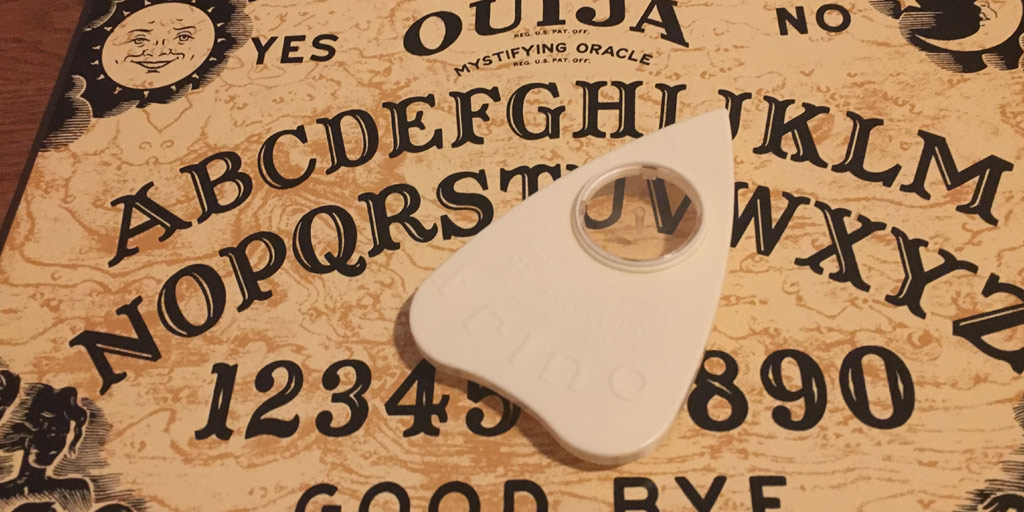A brief history of Ouija boards
 CREDIT: EMMA FAIRGRIEVE
CREDIT: EMMA FAIRGRIEVEThe most well-known design of the Ouija board is known as the "William Fuld" talking board set.
It's difficult to pinpoint when exactly Ouija boards came into existence. They have been a source of controversy, regardless of whether or not they work. The board is used by sitting opposite to your partner, with the board between you and your fingers lightly touching the triangular piece (planchette). One person is set to ask the questions and the planchette is said to move across the board saying “yes”, “no”, or spelling answers out. The board also includes numbers from zero to nine as well as the words “goodbye”. The rules of the game are simple: Never play alone, always say goodbye, and don't taunt or provoke spirits.
The Ouija board isn't even 130 years-old, but the idea of using “talking boards” to communicate with spirits or ghosts is not easy to narrow down. Talking boards were popular in parts of Europe much earlier before the concept took off in North America. There is no proof of when and where talking boards originated. The Ouija board that we are most familiar with nowadays started being produced in the late 1800s to early 1900s. During a time of heightened spiritualism, many people wanted to reach out and talk to loved ones who had passed on.
According to the Smithsonian magazine, Spiritualism hit America hard in 1848 with the sudden prominence of the Fox sisters of upstate New York. The Foxes claimed to receive messages from spirits who rapped on the walls in answer to questions, recreating this feat of channeling in parlours across the state. Aided by the stories about the celebrity sisters and other spiritualists in the new national press, spiritualism reached millions of adherents at its peak in the second half of the 19th century.
As talking boards rose in popularity, Elijah Bond thought he could turn the board into a toy. Bond filed the first patent for the Ouija board in 1891. The name allegedly was an ancient Egyptian word meaning “good luck.” The name was said to come from a seance Bond and his sister-in-law experienced. Apparently Bond held a session on the board in the late 1890s to ask the spirit world for a name for his new product.
Media has painted the board as a gate way to possession and many other horrifying events. Most notably, the film The Exorcist depicts a young girl who gets possessed by the devil after using a Ouija board. Although there is no proof, many people believe the Ouija board is capable of causing you harm. Whether you believe the board is dangerous or a hoax, Hasbro obtained the rights to the game in 1972 and has been producing boards ever since. After all it is just a game, isn't it?














